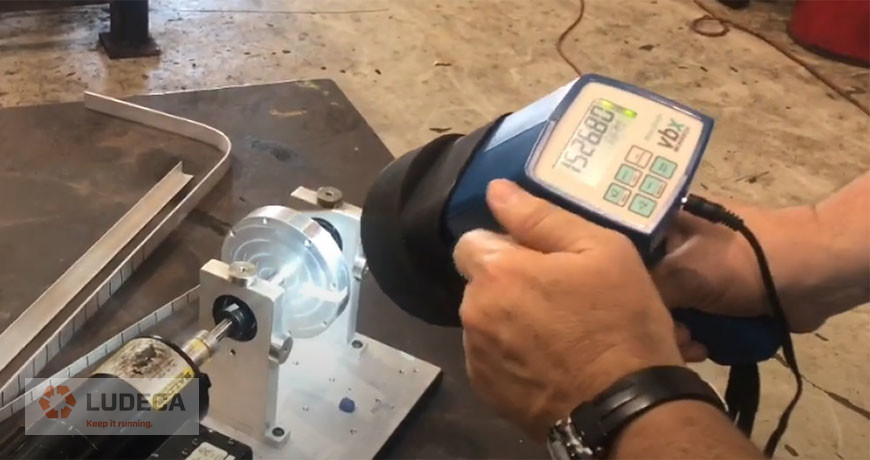
Exploring the Functionality of Stroboscopes in Technology
Share
For those in the technology field or even casual tech enthusiasts, it's crucial to comprehend how a stroboscope operates and its various applications. But what exactly is a stroboscope? Essentially, a stroboscope is a remarkable tool that allows us to visualize the motion of objects that may otherwise be imperceptible to the human eye. Utilizing stroboscopic illumination, this instrument analyzes motion across numerous sectors, including engineering, research, and entertainment.
The true power of a stroboscope is derived from its ability to provide a 'snapshot' of a moving object by synchronizing bright flashes of light with its motion. This principle is particularly beneficial for measuring rotational speeds and assessing vibrational patterns in industrial machines. In this piece, we will delve into the various types of stroboscopes, their uses, and their impact across different technology sectors.

Diving into the Components of a Stroboscope
A basic stroboscope comprises several fundamental parts that work harmoniously together. These include:
- Light Source: The light source of a stroboscope emits flashes of light at predetermined intervals, typically using incandescent bulbs, xenon flash tubes, or LED lights.
- Trigger Mechanism: The trigger synchronizes the timing of the light flashes with the object's motion, ensuring precise observations.
- Control Interface: Modern stroboscopes come with digital controls that make it easy to adjust flash rates and settings.
Different Types of Stroboscopes
There are three primary types of stroboscopes, each offering unique capabilities:
1. **Mechanical Stroboscopes**
This variant features a rotating disk with slits that emits light at specific intervals. While it was widely used in the past due to its straightforward design, digital options have largely supplanted it.
2. **Digital Stroboscopes**
Today's digital stroboscopes provide enhanced functionality and precision. They are user-friendly and allow for easy input of specific flash rates and performance adjustments.
3. **LED Stroboscopes**
Employing LED technology, these stroboscopes deliver efficient and sustainable lighting while maintaining high performance levels. They are often designed to be compact and portable.
Applications of Stroboscopes Across Many Fields
Gaining clarity on what a stroboscope is also entails recognizing its wide-ranging applications:
- Manufacturing and Engineering: Stroboscopes play a critical role in inspecting machinery and ensuring the proper functioning of components.
- Research and Development: In research environments, scientists use stroboscopes to observe rapid phenomena and gather essential data for experiments.
- Music and Entertainment: Within the entertainment industry, stroboscopes create dynamic effects that elevate visual experiences during shows and performances.
The Science of Stroboscopes: Frequency and Motion
When diving into what a stroboscope is, its essential to grasp the connection between frequency and motion. The device aligns the frequency of its light pulses with an object's natural frequency. For instance, if a rotating object is moving at twenty revolutions per minute, the stroboscope must flash lights at that same rate for the object to appear stationary. This intriguing challenge pushes tech professionals to analyze data with precision.
Selecting the Ideal Stroboscope for Your Needs
When it comes to choosing a stroboscope, consider factors such as your intended use, desired flash frequency range, and budget. Look for features that enhance accuracy and ease of use, including:
- Multiple flash settings for various applications.
- Higher flash frequencies for detailed analysis.
- Portability for convenient transport across job sites.
Maintenance Tips and Best Practices for Stroboscopes
To keep your stroboscope operating at peak efficiency, regular maintenance is critical. Here are a few best practices:
- Frequently clean the light source to ensure optimal brightness.
- Check for any loose connections or signs of damage.
- Adhere to the manufacturers guidelines for operation and storage.
Emerging Trends in Stroboscope Technology
Staying informed about advancements in stroboscope technology is essential. Recent innovations in LED utilization, connectivity options, and integrated software solutions have greatly enhanced functionality. Stroboscopes are now being connected with smartphones and tablets, streamlining their operation and data collection capabilities.
Key Considerations When Purchasing a Stroboscope
Before purchasing a stroboscope, consider the following:
- Compatibility with existing devices and software.
- A cost-benefit analysis regarding your specific needs.
- Ease of use in terms of operation and upkeep.
Concluding Thoughts
Grasping what a stroboscope is is vital for anyone involved in the tech sector. Whether you are studying motion in machinery or creating engaging entertainment experiences, this tool provides unmatched advantages. Embrace the potential of this technology and elevate your projects to new levels.

Frequently Asked Questions about Stroboscopes
1. What is the primary use of a stroboscope?
The primary function of a stroboscope is to analyze motion, measure rotational speeds, and study rapid phenomena across various domains like engineering and research.
2. What distinguishes a digital stroboscope from a mechanical one?
Digital stroboscopes excel in precision, user-friendly interfaces, and adaptability compared to mechanical versions.
3. Are stroboscopes applicable in the entertainment field?
Absolutely! Stroboscopes are utilized in the entertainment industry to produce striking light effects that enhance the visual appeal of performances.
If you'd like to explore more about stroboscopes, visit this comprehensive guide from RS Components. More detailed information can also be found on Wikipedia or in this medical article.
As an Amazon Associate, I earn from qualifying purchases.
